B.E. - Electronics and Communication Engineering
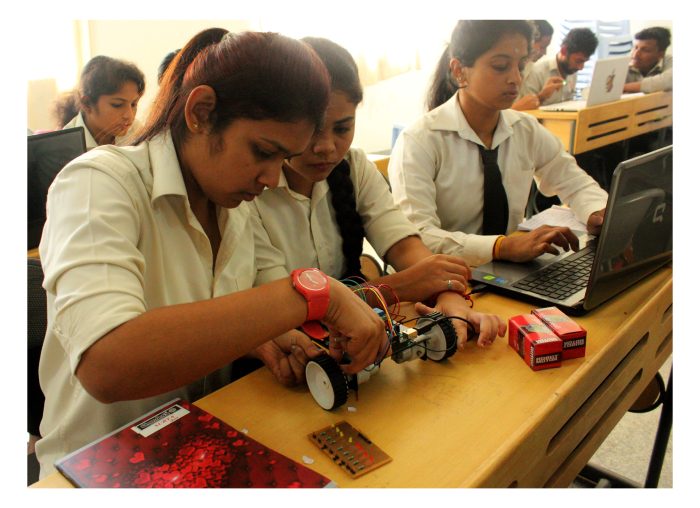
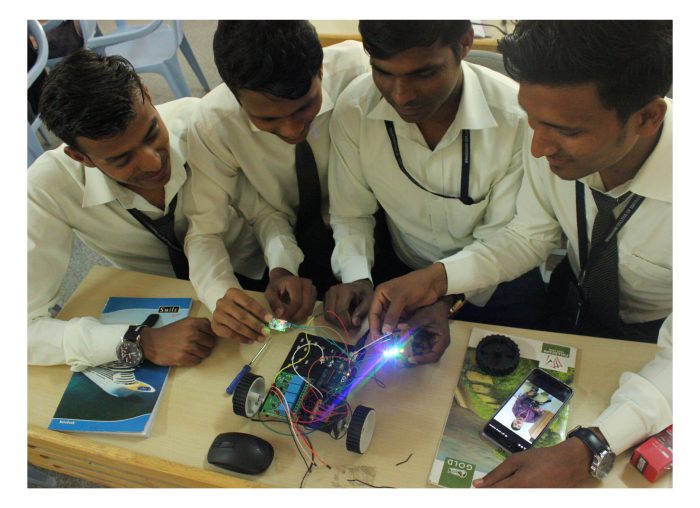
DEPARTMENT OVERVIEW
The Department of Electronics and Communication Engineering was established in the year 2008 with an initial intake of 60 students in the UG programme and enhanced its intake to 120.
Department is equipped with state-of-the-art infrastructure to support academic, research and extra-curricular activities for the all-round development of our students with well-qualified, skilled and experienced faculty members.
The Department frequently organizes Hands-on Workshops, Seminars, Technical Talks, Guest Lectures and Faculty Development Programs in recent trends from industry resource persons for the benefit of students and faculty community.
Department has attracted engineering aspirants from all over the country and abroad. Also effective in nurturing the technological skills as well as human values among the students to empower them as competent Electronics and Communication Engineers as well as Entrepreneurs to fulfil the requirements of the industry and needs of the society at large
The Department organizes the National Conference – “NC-EVEN” every year which provides a platform for students, research scholars and faculty members from various parts of the country to exhibit their research work.
ELECTRO-PHOENIX is ECE student association club under which the department encourages the students to conduct and participate in technical, extracurricular activities.
The Department is active with IETE/ISF Student Chapter
ELCOTSAV is a two-day National Level Technical Festival organized by the Department. It is a platform for the students to exhibit their technical skills. The fest attracts participation from various colleges across the country.
The Department has signed MoU’s with leading IT Industries, Research and training centres to empower the students with various activities.
We have an active proctored and mentoring system to monitor the student’s growth and counsel them as per their academic need. We also address their issues in meeting students and conducting Parents Teachers Meeting.
The Alumni network is active and it is used for the overall development of the department and institution.
The students have been trained towards carving respectful positions in top MNC companies, to opt for higher studies in various foreign universities, IIT’s and to become entrepreneurs.
VISION AND MISSION
VISION
To inculcate the engineering professionalism along with Universal Human Values among the students to meet the needs of the global scenario.
MISSION
To achieve academic excellence in Electronics and Communication Engineering through state-of-the-art learning environment.
Nurturing the spirit of Innovation, Research and Development among Faculty and Students by creating opportunities to interact with personnel in various academia and industry.
Motivating students with value-based skills and ethics to make them responsible citizens in extending their technical skills and knowledge to meet the needs of the society.
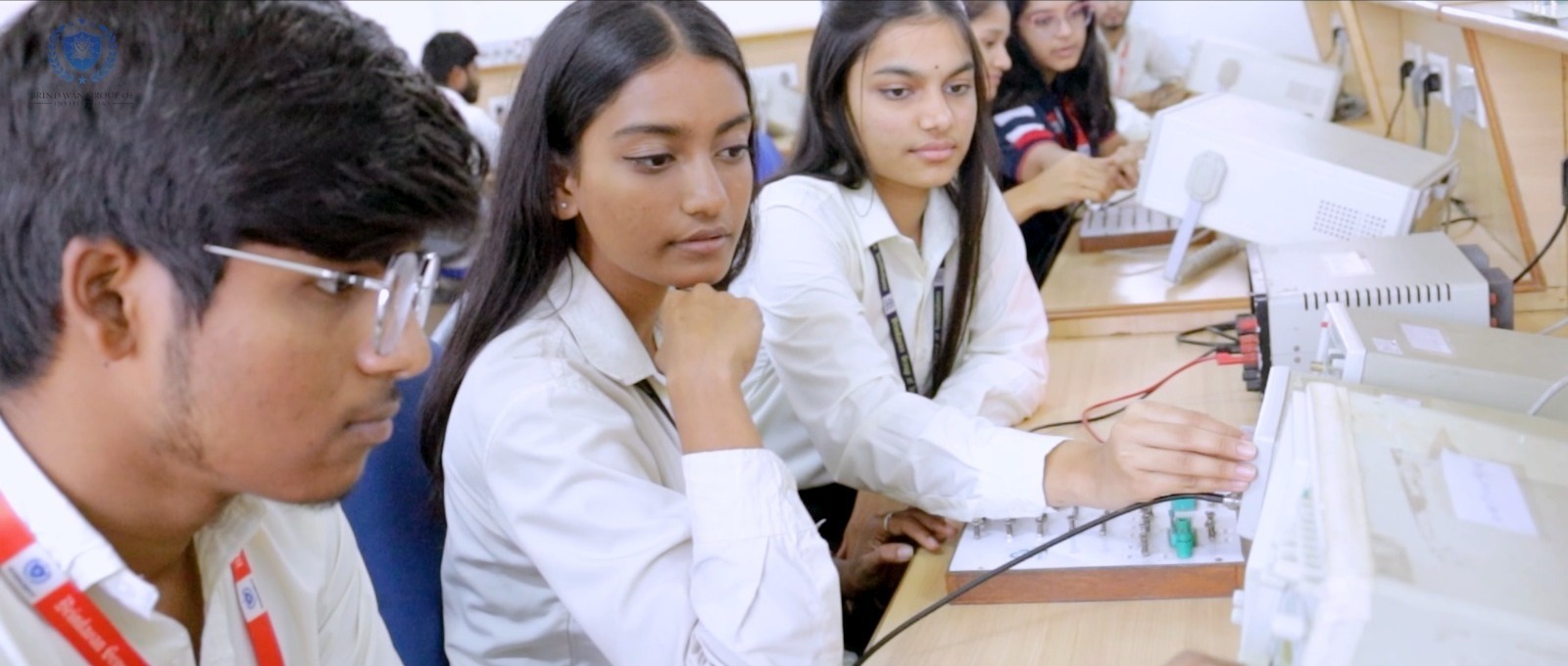
Salient Features
Shaping Tomorrow, Today

Proctor /Mentoring System is active to address the slow learners as well as to counsel the students grievances in academic aspects.

Alumni Social Media Group is active to exchange their views, give necessary inputs as well as Job opportunities.

Involve Institute Social Responsibility activities like Blood Donation Camp, Health Camp, Swatch Bharath, Rural Education & NSS

We inculcate knowledge among the students for the 360 degree personality development with professional ethics and universal human values Students Achievements - Enabled students with hands-on workshops in the field of Robotics, Embedded Systems, Networking, IOT and Image processing.

Enabled students to participate in live project Exhibitions at National Level Science and Technology Exhibition “JVTM” held at Adichunchanagiri, Nagamangala, Mandya and in AICTE sponsored National Level Project Exhibition held at Alpha Engineering College Bangalore. Students have brought laurels to the institution by winning the Prizes.

Students capabilities were developed to take up GATE/GRE/TOEFL/ IELTS/ CAT/ GMAT examinations and were successful in pursuing master level courses in reputed world class universities such as MIT - Massachusetts Institute of Technology, Carnegie Mellon University , Texas University, USA, Deakin University , South Australian University, Australia, North Korean University, Berlin University, Germany.

Students have taken competitive exams such as UPSC/KPSC and assumed good administrative positions in Government Sectors

Capabilities were developed to attend quiz competitions held at various institutions and secured prizes.

Alumni Meet is regularly conducted at the department level. Exchange of thoughts is encouraged on this platform. Alumni social media groups are active to share their experiences, inputs and job opportunities.

Parents-Teachers Meeting is conducted regularly to get the feedback of stakeholder.

Exit survey from the outgoing students has to be initiated to improve our overall view in teaching learning process
The department has conducted various workshops/seminars/Guest lectures/Webinars, The best students are awarded every academic year and financially supported. Few are listed below:
Internet of Things (IoT)
Embedded Systems
Latest trends in VLSI Technology
"Programming with IoT Boards"
"MATLAB Programming"
Cyber Security
Python Programming.
POs are statements that describe what students are expected to know and be able to do upon graduating from the program. These relate to the skills, knowledge, analytical ability attitude and behaviour that students acquire through the program.
DEPARTMENT LABORATORIES

Analog Electronics & Circuits Laboratory

Digital Electronics Lab

Communication Laboratory

Advanced Communication Laboratory

Microprocessor Laboratory

Microcontroller Laboratory

ARM/Embedded Controller Lab

Digital Signal Processing Laboratory

Computer Communication Laboratory

HDL Laboratory

VLSI Laboratory

Internet of Things (IoT) Laboratory

Labview Programming Laboratory

Project/Research Lab
INFRASTRUCTURE
We have evolved ourselves to the changes as per the need of the day and state of the art technologies. We have transformed our teaching techniques from black board to hands-on experience and ICT learning. The infrastructure of the department has been upgraded to meet the global standards in technological challenges with State-of-the-art Computers & Advanced Software Tools like MATLAB & Cadence VLSI Tool.
PROGRAM SPECIFIC OUTCOMES
Specify, design, build and test analogue, digital and embedded systems for signal processing.
Understand and architect wired and wireless analogue and digital communication systems as per specifications, and determine their performance.
PROGRAM EDUCATIONAL OBJECTIVES
To provide an academic and research environment in which the students as well as faculty can interact intensively to assimilate the technical skills and knowledge.
To impart quality technical (theoretical and Practical) education in the field of Electronics and Communications in collaboration with academia, industry and research organizations (to encourage/ nurture the creativity and innovative ideas among the students).
To inculcate academic and professional engineering qualities among the students and faculty to have commitment in continuous learning to cope up with the challenging and evolving technologies to meet the needs of the global market/ scenario.
To nurture and disseminate leadership qualities among the students with moral, ethical and multidisciplinary knowledge to achieve excellence in professional life and contribute to the nation.
3rd to 8th Semester BE – B.E –Electronics and Communication Engineering Scheme and Syllabus
Course Structure
Download - 1
Course Structure
Download - 2
ELIGIBILITY



Course Outcomes (CO’s)
1. COURSE OUTCOME FOR 21 SCHEME
| Subject Code | Course Outcomes (CO’s) |
|---|---|
| 18MAT31 | 1.Use Laplace Transform and Inverse Laplace Transform in solving
differential/integral
equations arising in network
analysis, control systems and other fields of engineering. 2.Demonstrate the Fourier series to study the behaviour of periodic functions and their applications in system communications, digital signal processing and field theory. 3.Make use of Fourier transform and Z-transform to illustrate discrete/continuous function arising in wave and heat propagation, signals and system. 4.Solve first and second order ordinary differential equations arising in engineering problems using single step and multistep numerical methods. 5.Determine the externals of functional using calculus of variations and solve problems arising in dynamics of rigid bodies and vibrational analysis |
| 18EC32 | 1. Determine currents and voltages using source
transformation/source
shifting/mesh/nodal analysis and reduce given
network using star delta transformation/source
transformation/source shifting. 2. Solve network problems by applying Superposition /Thevenien's/Nortan's/Maximum Power Transfer/Millman's Network Theorems and electrical laws to reduce the circuit complexities and to arrive at feasible solutions. 3. Calculate Current and Voltages for the given circuit under transient conditions and apply Laplace transform to solve the given network. 4. Solve the given Network using specified two port network parameters- Z,Y,T &h. 5. Understand the concept of resonance and determine the parameters that characterize series/parallel resonant circuits. |
| 18EC33 | 1. Understand the principles of semiconductor physics. 2. Understand the principles and characteristics of different types of semiconductor devices. 3. Understand the fabrication process of semiconductor devices. 4. Utilize the mathematical models of semiconductor junctions for circuits and systems. 5. Identify the mathematical models of MOS transistors for circuits and systems. |
| 18EC34 | 1. Explain the concept of combinational and sequential logic
circuits. 2. Analyze and design the combinational logic circuits. 3. Describe and characterize flip-flops and its applications. 4. Design the sequential circuits using SR,JK.D,T flip-flops and melay and moore machines. 5. Design applications of combinational and sequential circuits |
| 18EC35 | 1. Explain the basic organization of a computer system. 2. Describe the addressing modes, instruction formats and program control statements.v 3. Explain different ways of accessing an input/output device including interrupts. 4. Illustrate the organization of different types of semiconductor and other secondary storage memories. 5. Illustrate simple processor organization based on hardwired control and micro programmed control. |
| 18EC36 | 1. Build and test circuits using power electronic devices. 2. Analyze and design controlled rectifier, DC to DC converter, DC to AC inverters, SMPS. 3.Analyze instrument characteristics and errors. 4. Describe the principle of operation and develop circuits for multi range Ammeters, voltmeters and bridges to measure passive component values and frequency.v 5.Explain the principle, design and analyze the transducers for measuring the physical parameters. |
| 18ECL37 | 1. Recognize and Demonstrate functioning of semiconductor power
devices. 2. Evaluate the characteristics, switching, power conversion and control by semiconductor power devices. 3. Analyze and response and plot the characteristics of transducers such as LDR, Photodiode etc. 4. Design and test simple electronic circuits for measurement of temperature and resistance. 5. Use the circuit simulation software for the implementation and characterization of electronic circuits and devices. |
| 18ECL38 | 1. Design, realize and verify Demorgan's theorem, SOP, POS
forms. 2. Demonstrate the truth table of various expressions and combinational circuits using logic gates. 3. Design various combinational circuits such as adders, sub tractors, comparators, multiplexers and demultiplexers. 4. Construct flip-flops, counters and shift registers. 5. Simulate serial adder and Binary Multiplier. |
| 18KVK28/39/49 | At the end of the course, the student will be able to understand Kannada and communicate in Kannada language |
| 18CPC39/49 | 1. Describe and analyze the role and salient features of the
Indian Constitution. 2. Understand the structure and powers of the union and State Executives. 3. Relate to the procedures and provisions in the electoral process. 4. Develop Engineering and Professional ethics and adopt the responsibilities expected of an engineer. 5. Identify the cybercrimes and describe the cyber safety measures. |
| 18MAT41 | 1. Use the concepts of analytic function and complex potentials
to solve the problems
arising in electromagnetic field
theory. 2. Utilize conformal transformation and complex integral arising in aerofoil theory, fluid flow visualization and image processing. 3. Apply discrete and continuous probability distributions in analysing the probability models arising in the engineering field. 4. Make use of the correlation and regression analysis to fit a suitable mathematical model for the statistical data. 5. Construct joint probability distributions and demonstrate the validity of testing the hypothesis |
| 18EC42 | 1. Understand the characteristics of BJTs and FETs. 2. Design and analyze BJT and FET amplifier circuits. 3. Design sinusoidal and non-sinusoidal oscillators. 4. Understand the functioning of linear ICs. 5. Design of linear IC based circuits. |
| 18EC43 | 1. Develop the mathematical model of mechanical and electrical
systems. 2.Develop transfer function for a given control system using block diagram reduction techniques and signal flow graph method. 3. Determine the time domain specifications for first and second order systems. 4. Determine the stability of a system in the time domain using Routh-Hur- Witz criterion and Root locus technique. 5. Determine the stability of a system in the frequency domain using Nyquist and bode plots. |
| 18EC44 | 1. Analyze and evaluate single and multiple random
variables. 2. Identify and associate Random variables and random processes in communication events. 3. Analyze and model the random events in typical communication events to extract quantitative statistical parameters. 4. Analyze and model typical signal sets in terms of a basic function set of Amplitude, Phase and frequency. 5. Demonstrate by way of simulation or emulation the ease of analysis employing basis functions, statistical representation and Eigenvalues. |
| 18EC45 | 1. Analyze the different types of signals and systems. 2. Determine the linearity, causality, time-invariance and stability properties of continuous and discrete time systems. 3. Evaluate the convolution sum and integral. 4. Represent continuous and discrete signals and systems in frequency domain using Fourier representations. 5. Analyze discrete time signals and systems using Z-Transforms. |
| 18EC46 | 1. Explain the difference between Microprocessors and
Microcontrollers, architecture of
8051 microcontroller,
interfacing of 8051 to external memory and instruction set of
8051. 2. Write 8051 assembly level programs using the 8051 instruction set. 3. Explain the interrupt system, operation of timers/counters and serial port of 8051. 4. Write 8051 assembly level programs to generate square waves on 8051 I/O port pin using interrupt and c program to send and receive serial data using 8051 serial port. 5. Interface simple switches, simple LEDs,ADC 0804,LCD and stepper motor to 8051 using 8051 I/O ports. |
| 18ECL47 | 1. Enhance programming skills using Assembly language and C. 2. Write assembly language programs in 8051 for solving simple problems that manipulate input data using different instructions of 8051. 3. Interface different input and output devices to 8051 and control those using Assembly language programs. 4. Interface the serial devices to 8051 and do the serial transfer using C programming. 5. Develop applications based on Microcontroller 8051. |
| 18ECL48 | 1. Analyze frequency response of JFET/MOFET amplifier. 2. Design BJT/FETs amplifiers with and without feedback and evaluate their performance characteristics. 3. Apply the knowledge gained in the design of BJT/FET circuits in oscillators. 4. Design analogue circuits using OPAMPs for different applications.v 5. Simulate and analyze analogue circuits that use ICs for different electronic applications. |
| 18ES51 | 1. Understand the fundamental concepts of Management and
Entrepreneurs and opportunities
in order to set up a business. 2. Identify the various organizations’ architecture. 3. Describe the functions of Managers, Entrepreneurs and their social responsibilities. 4. Understand the components in developing a business plan. 5. Recognize the various sources of funding and institutions supporting entrepreneurs. |
| 18EC52 | 1. Determine response of LTI systems using the time domain and
DFT techniques. 2. Compute DFT of real and complex discrete time signals. 3. Compute DFT using FFT algorithms and linear filtering approach. 4. Design and realize FIR and IIR digital filters. Under the DSP processor architecture. |
| 18EC53 | 1. Analyze and compute performance of AM and FM modulation in
the presence of noise at
the receiver. 2. Analyze and compute performance of digital formatting processes with quantization noise. 3. Multiplex digitally formatted signals at Transmitter. 4. Demultiplex the signals and reconstruct digitally formatted signals at the receiver. 5. Design /Demonstrate the use of digital formatting in multiplexers, Vocoders and Video transmission. |
| 18EC54 | 1.Explain concept of Dependent and Independent source, measure
of information, Entropy,
rate of information and order of
a source. 2. Represent the information using Shannon encoding, Shannon Fano, prefix and Huffman encoding algorithms. 3. Model the continuous and discrete communication channels using input, output and joint probabilities. 4. Determine a code word consisting of the check bits computed using Linear block codes, cyclic codes and convolutional codes. 5. Design the encoding and decoding circuits for linear block codes, cyclic codes, convolutional codes,BCH and Golay codes. |
| 18EC55 | 1. Evaluate problems on electrostatic force,electric field due
to point,linear,volume
charges by applying conventional
methods and charge in a volume. 2. Applying GAUSS law to evaluate electric fields due to different charge distributions and volume charge distribution by using Divergence theorem. 3. Determine potential and energy with respect to point charge and capacitance using Laplace equation and Apply Biot-Savart's and Ampere's law for evaluating magnetic field for different current configurations. 4. Calculate magnetic force, potential energy and Magnetization with respect to magnetic materials and voltage induced in electric circuits. 5. Apply Maxwell's equations for time varying fields,EM waves in free space and conductors and evaluate power associated with EM waves using pointing theorem. |
| 18EC56 | 1. Write Verilog programs in gate, dataflow (RTL),behavioural
and switch modelling
levels of Abstraction. 2. Design and verify the functionality of digital circuits /systems using test benches. 3. Identify the suitable Abstraction level for a particular digital design. 4. Write the programs more effectively using Verilog tasks, functions and directives. 5. Perform timing and delay simulation and interpret the various constructs in logic synthesis. |
| 18ECL57 | 1. Understand the concepts of analogue to digital conversion of
signals and frequency
domain sampling of signals. 2. Model the discrete time signals and systems and verify its properties and results. 3. Implement discrete computations using a DSP processor and verify the results. 4. Realize the digital filters using a simulation tool and analyze the response of the filter for an audio signal. 5. Write programs using Mat lab/Scilab Octave to illustrate DSP Concepts |
| 18ECL58 | 1. Write the verilog/VHDL programs to simulate combinational
circuits in
dataflow,Behavioral,and Gate level
Abstractions. 2. Describe sequential circuits like flip-flop and counters in Behavioral description and obtain simulation waveforms. 3. Use FPGA/CPLD kits for downloading verilog codes and checking output. 4. Synthesize combinational and sequential circuits on programmable ICs and test the hardware. 5. Interface the hardware to the programmable chips and obtain the required output. |
| 18EC61 | 1. Associate and apply the concepts of Band pass sampling to
well specified signals and
channels. 2. Analyze and compute performance parameters and transfer rates for low pass and band pass symbol under ideal and corrupted non band limited channels. 3. Test and validate symbol processing and performance parameters at the receiver under ideal and corrupted band limited channels. 4. Demonstrate that a band pass signal subjected to corruption and distortion in a band limited channel can be processed at the receiver to meet specified performance criteria. 5. Understand the principles of spread spectrum communication. |
| 18EC62 | 1. Describe the use and advantages of microwave
transmission. 2. Analyze various parameters related to microwave transmission lines and waveguides. 3.Identify microwave devices for several applications. 4. Analyze various antenna parameters necessary for building an RF system. 5. Recommend various antenna configurations according to the applications |
| 18EC641 | 1. Explain the goals, structure, operation and types of
operating systems. 2. Apply scheduling techniques to find performance factors. 3. Explain organization of file systems and IOCS. 4. Apply suitable techniques for contiguous and non-contiguous memory allocation. 5. Describe message passing, deadlock detection and prevention methods. |
| 18EC644 | 1. Construct the combinational circuits using discrete gates and
programmable logic
devices. 2. Describe how arithmetic operations can be performed for each kind of code and also combinational circuits that implement arithmetic operations. 3. Design a semiconductor memory for specific chip design. 4. Design embedded systems using small microcontrollers, large CPUs/DSPs,hard or soft processor cores. 5. Synthesize different types of I/O controllers that are used in embedded systems. |
| 18EC646 | 1. Examine python syntax and semantics and be fluent in the use
of python flow control
and functions. 2. Demonstrate proficiency in handling strings and File systems. 3. Create, run and manipulate python programs using core data structures like Lists, dictionaries and use regular expressions. 4. Interpret the concepts of object-oriented programming as used in python. 5. Implement exemplary applications related to Network programming, web services and databases in python. |
| 18ECL66 | 1. Understand the instruction set of 32 bit microcontroller ARM
cortex M3 and software
tool required for programming in
Assembly and C language. 2. Develop assembly language programs using ARM Cortex M3 for different applications. 3. Interface external devices and I/O with ARM Cortex M3. 4. Develop c language programs and library functions for embedded system applications. 5. Analyze the functions of various peripherals, peripheral registers and power saving modes of ARM Cortex M3. |
| 18ECL67 | 1. Design and test circuits for analogue modulation and
demodulation schemes viz,AM
FM,etc. 2. Determine the characteristics and response of microwave waveguide. 3. Determine the characteristics of microstrip antennas and devices and compute the parameters associated with it. 4. Design and test the digital and analogue modulation circuits and display the waveforms. 5. Simulate the digital modulation systems and compare the error performance of basic digital modulation schemes. |
| 18EC71 | 1. Understand the concept of networking. 2. Describe the various networking architectures. 3. Identify the protocols and services of different layers. 4. Distinguish the basic network configurations and standards associated with each network. 5. Analyze a simple network and measure its parameters. |
| 18EC72 | 1. Demonstrate understanding of MOS transistor theory, CMOS
fabrication flow and
technology scaling. 2. Draw the basic gates using the stick and layout diagrams with the knowledge of physical design aspects. 3. Demonstrate ability to design combinational, sequential and dynamic logic circuits as per the requirements. 4. Interpret memory elements along with timing considerations. 5. Interpret testing and testability issues in VLSI design. |
| 18EC731 | 1. Explain the fundamentals of real time systems and its
classifications. 2. Understand the concept of computer control and the suitable computer hardware requirements for real time applications. 3. Describe the operating system concepts and techniques required for real time systems. 4. Develop the software algorithms using suitable languages to meet real time applications. 5. Apply suitable methodologies to design and develop real time systems. |
| 18EC741 | 1. Understand choice and application of IOT and M2M
communication protocols. 2. Describe cloud computing and design principles of IOT. 3. Relate to MQTT clients, MQTT server and its programming. 4. Describe the architectures and its communication protocols of WSNs. 5. Identify the uplink and downlink communication protocols associated with specific application of IOT/WSNs. |
| 18ECL76 | 1. Choose suitable tools to model a network. 2. Use the network simulator for learning and practice of networking algorithms. 3. Illustrate the operations of network protocols and algorithm using C programming. 4. Simulate the network with different configurations to measure the performance parameters. 5.Implement the data link and routing protocols using C programming. |
| 18ECL77 | 1. Design and simulate combinational and sequential digital
circuits using Verilog HDL. 2. Understand the synthesis process of digital circuits using EDA tool. 3. Perform Asci design flow and understand the process synthesis, synthesis constraints and evaluating the synthesis reports to obtain optimum gate level netlist. 4. Design and simulate basic CMOS circuits like inverter, common source amplifier and differential amplifiers. 5. Perform RTL-GDSII flow and understand the stages in ASIC design. |
| 18EC81 | 1. Understand the communication theory both physical and
networking associated with GSM,
CDMA, E 4G systems. 2. Explain concepts of propagation mechanisms like reflection, Diffraction, scattering in wireless channels. 3. Develop a scheme for idle mode, call setup, call progress handling and call tear down in a GSM cellular network. 4. Develop a scheme for idle mode, call setup, call progress handling and call tear down in a CDMA cellular network. 5. Understand the basic operations of the Air interface in a LTE 4G system. |
| 18EC821 | 1. Explain network security services mechanisms and explain
security concepts. 2. Understand the concept of Transport Level security and secure socket layer. 3. Explain security concerns in internet protocol security. 4. Explain intruders, intrusion detection and malicious software. 5. Describe firewalls, firewall characteristics, biasing and configuration. |
2. COURSE OUTCOME FOR 18 SCHEME
| Subject Code | Course Outcomes (CO’s) |
|---|---|
| 18MAT31 | 1.Use Laplace transform and inverse Laplace transform in solving
differential/ integral
equations arising in network
analysis, control systems and other fields of engineering. 2. Demonstrate Fourier series to study the behavior of periodic functions and their applications in system communications, digital signal processing and field theory. 3. Make use of Fourier transform and Z-transform to illustrate discrete/continuous function arising in wave and heat propagation, signals and systems. 4.Solve first and second order ordinary differential equations arising in engineering problems using single step and multistep numerical methods. 5.Determine the externals of functional using calculus of variations |
| 18CV32 | 1.To evaluate the basic concepts of the stresses and strains for
different materials and
strength of structural
elements. 2.To evaluate the development of internal forces and resistance mechanisms for one dimensional and two dimensional structural elements. 3.To analyze different internal forces and stresses induced due to representative loads on structural elements. 4.To evaluate slope and deflections of beams. 5.To evaluate the behavior of torsion members, columns and struts. |
| 18CV33 | 1. Possess a sound knowledge of fundamental properties of fluids
and fluid Continuum 2. Compute and solve problems on hydrostatics, including practical applications 3. Apply principles of mathematics to represent kinematic concepts related to fluid flow 4. Apply fundamental laws of fluid mechanics and the Bernoulli’s principle for practical applications 5. Compute the discharge through pipes and over notches and weirs. |
| 18CV34 | 1. Select suitable materials for buildings and adopt suitable
construction techniques. 2. Decide suitable type of foundation based on soil parameters. 3. Supervise the construction of different building elements based on suitability . 4. Exhibit the knowledge of building finishes and form work requirements |
| 18CV35 | 1.Possess a sound knowledge of fundamental principles of
Geodetics . 2.Measurement of vertical and horizontal plane, linear and angular dimensions to arrive at solutions to basic surveying problems. 3.Capture geodetic data to process and perform analysis for survey problems . 4.Analyse the obtained spatial data and compute areas and volumes. Represent 3D data on plane figures as contours. |
| 18CV36 | 1. Apply geological knowledge in different civil engineering
practices. 2. Students will acquire knowledge on durability and competence of foundation rocks, and confidence enough to use the best building materials. 3. Civil Engineers are competent enough for the safety, stability, economy and life of the structures that they construct. 4. Able to solve various issues related to ground water exploration, build up dams, bridges, tunnels which are often confronted with ground water problems. 5. Intelligent enough to apply GIS, GPS and remote sensing as a latest tool in different civil engineering construction. |
| 18CVL37 | 1. Prepare, read and interpret the drawings in a professional
set up. 2.Know the procedures of submission of drawings and Develop working and submission drawings for building. 3. Plan and design a residential or public building as per the given requirements. |
| 18CVL38 | 1. Reproduce the basic knowledge of mathematics and engineering
in finding the strength
in tension, compression, shear
and torsion. 2. Identify, formulate and solve engineering problems of structural elements subjected to flexure. 3. Evaluate the impact of engineering solutions on the society and also will be aware of contemporary issues regarding failure of structures due to unsuitable materials. |
| 18MAT41 | 1. Use the concepts of analytic function and complex potentials
to solve the problems
arising in electromagnetic field
theory. 2. Utilize conformal transformation and complex integral arising in aerofoil theory, fluid flow visualization and image processing. 3. Apply discrete and continuous probability distributions in analyzing the probability models arising in the engineering field. 4. Make use of the correlation and regression analysis to fit a suitable mathematical model for the statistical data. 5. Construct joint probability distributions and demonstrate the validity of testing the hypothesis. |
| 18CV42 | 1. Identify different forms of structural systems. 2. Construct ILD and analyze the beams and trusses subjected to moving loads . 3. Understand the energy principles and energy theorems and its applications to determine the deflections of trusses and beams. 4. Determine the stress resultants in arches and cables. |
| 18CV43 | 1. Apply dimensional analysis to develop mathematical modeling
and compute the
parametric values in prototype by
analyzing the corresponding model parameters . 2. Design the open channels of various cross sections including economical channel sections . 3. Apply Energy concepts to flow in open channel sections, Calculate Energy dissipation, 4. Compute water surface profiles at different conditions. 5. Design turbines for the given data, and to know their operation characteristics under different operating conditions. |
| 18CV44 | 1. Relate material characteristics and their influence on
microstructure of concrete. 2. Distinguish concrete behavior based on its fresh and hardened properties. 3. Illustrate proportioning of different types of concrete mixes for required fresh and hardened properties using professional codes. 4. Adopt suitable concreting methods to place the concrete based on requirement. 5. Select a suitable type of concrete based on specific application. |
| 18CV45 | 1. Apply the knowledge of geometric principles to arrive at
surveying problems . 2. Use modern instruments to obtain geo-spatial data and analyze the same to appropriate engineering problems. 3. Capture geodetic data to process and perform analysis for survey problems with the use of electronic instruments. 4. Design and implement the different types of curves for deviating type of alignments. |
| 18CV46 | 1. Estimate average and peak water demand for a community. 2. Evaluate available sources of water, quantitatively and qualitatively and make appropriate choices for a community. 3. Evaluate water quality and environmental significance of various parameters and plan suitable treatment systems. 4. Design a comprehensive water treatment and distribution system to purify and distribute water to the required quality standards. |
| 18CVL47 | 1.The students are able to identify the minerals, rocks and
utilize them effectively in
civil engineering practices. 2.The students will interpret and understand the geological conditions of the area for implementation of civil engineering projects. 3.The students will interpret subsurface information such as thickness of soil, weathered zone, depth of hard rock and saturated zone by using geophysical methods. 4.The students will learn the techniques in the interpretation of LANDSAT Imageries to find out the lineaments and other structural features for the given area. 5.The students will be able to identify the different structures in the field. |
| 18CVL48 | 1.Properties of fluids and the use of various instruments for
fluid flow measurement. 2.Working of hydraulic machines under various conditions of working and their characteristics. |
| 18MATE IP41 | 1.Solve systems of linear equations using matrix algebra. 2.Apply the knowledge of numerical methods in modeling and solving engineering problems. 3.Apply the knowledge of numerical methods in modeling and solving engineering problems. 4.Classify partial differential equations and solve them by exact methods. 5. Apply elementary probability theory and solve related problems. |
| 18CV51 | 1.Prepare a project plan based on requirements and prepare a
schedule of a project by
understanding the activities and
their sequence. 2.Understand labor output, equipment efficiency to allocate resources required for an activity / project to achieve desired quality and safety. 3.Analyze the economics of alternatives and evaluate benefits and profits of a construction activity based on monetary value and time value. 4.Establish as an ethical entrepreneur and establish an enterprise utilizing the provisions offered by the federal agencies. |
| 18CV52 | 1. Determine the moment in indeterminate beams and frames having
variable moment of
inertia and subsidence using slope
deflection method. 2. Determine the moment in indeterminate beams and frames of no sway and sway using the moment distribution method. 3. Construct the bending moment diagram for beams and frames by Kani’s method. 4. Construct the bending moment diagram for beams and frames using the flexibility method. 5. Analyze the beams and indeterminate frames by system stiffness method. |
| 18CV53 | 1. Understand the design philosophy and principles. 2. Solve engineering problems of RC elements subjected to flexure, shear and torsion. 3. Demonstrate the procedural knowledge in designs of RC structural elements such as slabs, columns and footings. 4. Owns professional and ethical responsibility. |
| 18CV54 | 1.Ability to plan and execute geotechnical site investigation
programs for different
civil engineering projects . 2.Understanding of stress distribution and resulting settlement beneath the loaded footings on sand and clayey soils . 3.Ability to estimate the factor of safety against failure of slopes and to compute lateral pressure distribution behind earth retaining structures . 4.Ability to determine bearing capacity of soil and achieve proficiency in proportioning shallow isolated and combined footings for uniform bearing pressure . 5.Capable of estimating load carrying capacity of single and group of piles |
| 18CV55 | 1.Select the appropriate sewer appurtenances and materials in
the sewer network. 2.Design the sewers network and understand the self-purification process in flowing water. 3.Design the various physico- chemical treatment units 4.Design the various biological treatment units 5.Design various AOPs and low cost treatment units. |
| 18CV56 | 1. Acquire the capability of proposing a new alignment or
re-alignment of existing
roads, conduct necessary field
investigation for generation of required data. 2. Evaluate the engineering properties of the materials and suggest the suitability of the same for pavement construction. 3. Design road geometrics, structural components of pavement and drainage. 4. Evaluate the highway economics by a few select methods and also will have a basic knowledge of various highway financing concepts. |
| 18CVL57 | 1.Apply the basic principles of engineering surveying and for
linear and angular
measurements. 2.Comprehend effective field procedures required for a professional surveyor. 3.Use techniques, skills and conventional surveying instruments necessary for engineering practice. |
| 18CVL58 | 1.Able to interpret the experimental results of concrete and
highway materials based on
laboratory tests. 2.Determine the quality and suitability of cement. 3. Design appropriate concrete mix Using Professional codes. 4. Determine strength and quality of concrete. 5. Evaluate the strength of structural elements using NDT techniques. 6. Test the soil for its suitability as subgrade soil for pavements. |
| 18CIV59 | 1.Understand the principles of ecology and environmental issues
that apply to air, land,
and water issues on a global
scale. 2.Develop critical thinking and/or observation skills, and apply them to the analysis of a problem or question related to the environment. 3.Demonstrate ecology knowledge of a complex relationship between biotic and a biotic components. 4.Apply their ecological knowledge to illustrate and graph a problem and describe the realities that managers face when dealing with complex issues. |
| 18CV61 | 1.Possess knowledge of Steel Structures Advantages and
Disadvantages of Steel
structures, steel code provisions and
plastic behavior of structural steel. 2.Understand the Concept of Bolted and Welded connections. 3.Understand the Concept of Design of compression members, built-up columns and column splices. 4.Understand the Concept of Design of tension members, simple slab base and gusseted base. 5.Understand the Concept of Design of laterally supported and unsupported steel beams. |
| 18CV62 | 1.Ability to plan and execute geotechnical site investigation
program for different
civil engineering projects 2. Understanding of stress distribution and resulting settlement beneath the loaded footings on sand and clayey soils 3. Ability to estimate factor of safety against failure of slopes and to compute lateral pressure distribution behind earth retaining structures 4. Ability to determine bearing capacity of soil and achieve proficiency in proportioning shallow isolated and combined footings for uniform bearing pressure 5. Capable of estimating load carrying capacity of single and group of piles |
| 18CV63 | 1. Understand the importance of hydrology and its
components. 2. Measure precipitation and analyze the data and analyze the losses in precipitation. 3. Estimate runoff and develop unit hydrographs. 4. Find the benefits and ill-effects of irrigation. 5. Find the quantity of irrigation water and frequency of irrigation for various crops. 6. Find the canal capacity, design the canal and compute the reservoir capacity. |
| 18CV641 | 1. Evaluate the structural systems to apply concepts of
flexibility and stiffness
matrices for simple problems. 2. Identify, formulate and solve engineering problems with respect to flexibility and stiffness matrices as applied to continuous beams, rigid frames and trusses. 3. Identify, formulate and solve engineering problems by application of concepts of direct stiffness method as applied to continuous beams and trusses. 4. Evaluate secondary stresses. |
| 18CV642 | 1. Analyze existing solid waste management systems and to
identify their drawbacks. 2. Evaluate different elements of the solid waste management system. 3. Suggest suitable scientific methods for solid waste management elements. 4. Design a suitable processing system and evaluate disposal sites. |
| 18CV643 | 1. Solve the problems of Environmental issues concerned with
building materials and cost
effective building
technologies. 2. Select appropriate type of masonry unit and mortar for civil engineering constructions; also they are able to Design Structural Masonry Elements under Axial Compression. 3. Analyze different alternative building materials which will be suitable for specific climate and in an environmentally sustainable manner. Also capable of suggesting suitable agro and industrial wastes as a building material. 4. Recommend various types of alternative building materials and technologies and design an energy efficient building by considering local climatic conditions and building material. |
| 18CV644 | 1.Give solutions to solve various problems associated with soil
formations having less
strength. 2.Use effectively the various methods of ground improvement techniques depending upon the requirements. 3. utilize properly the locally available materials and techniques for ground improvement so that economy in the design of foundations of various civil engineering structures |
| 18CV645 | 1. Acquires capability of choosing alignment and also design
geometric aspects of
railway system, runway and taxiway. 2. Suggest and estimate the material quantity required for laying a railway track and also will be able to determine the hauling capacity of a locomotive. 3. Develop layout plan of airport, harbor, dock and will be able relate the gained knowledge to identify required type of visual and/or navigational aids for the same. 4. Apply the knowledge gained to conduct surveying, understand the tunneling activities. |
| 18CV651 | 1. Collect data and delineate various elements from the
satellite imagery using their
spectral signature. 2.Analyze different features of ground information to create raster or vector data. 3.Perform digital classification and create different thematic maps for solving specific problems. 4. Make decisions based on the GIS analysis on thematic maps. |
| 18CV652 | 1.Understand the human factors and vehicular factors in traffic
engineering design. 2. Conduct different types of traffic surveys and analysis of collected data using statistical concepts. 3.Use an appropriate traffic flow theory and to comprehend the capacity & signalized intersection analysis. 4. Understand the basic knowledge of the Intelligent Transportation System. |
| 18CV653 | 1.Identify hazards in the workplace that pose an error threat to
their safety or health,
or that of others. 2.Controls fear unhealthy hazards and propose methods to eliminate the hazard. 3.Present a coherent analysis of a potential safety or health hazard both verbally and in writing, citing the occupational Health and Safety Regulations as well as supported legislation. 4. Discuss the role of health and safety in the workplace pertaining to the responsibilities of workers, managers, supervisors. 5. Identify the decisions required to maintain protection of the environment, workplace as well as personal health and safety. |
| 18CV654 | 1.Learn the sustainability concepts; understand the role and
responsibility of engineers
in sustainable development. 2. Quantify sustainability, and resource availability, Rationalize the sustainability based on scientific merits. 3. Understand and apply sustainability concepts in construction practices, designs, product developments and processes across various engineering disciplines. 4. Make a decision in applying green engineering concepts and become a lifelong advocate of sustainability in society. |
| 18CV655 | 1. After studying this course, students would be able to suggest the appropriate system/s in various functional areas of transportation. Would be able to amalgamate the various systems, plan and implement the applications of ITS. Would have learnt the application of information technology and telecommunication to control traffic and also provide advance information to the travelers, automatic handling of emergencies and to improve safety. |
| 18CV656 | 1. Apprehend various components of land as a natural resource
and land use planning. 2. Know availability and distribution for water resources as applied to India. 3. Analyze the components of air as a resource and its pollution. 4. Discuss biodiversity & its role in ecosystem functioning. 5. Critically appreciate the environmental concerns of today. |
| 18CVL66 | 1.use software skills in a professional set up to automate the work and thereby reduce cycle time for completion of the work |
| 18CVL67 | 1.Acquire capability to conduct experiments and estimate the
concentration of different
parameters. 2.Compare the result with standards and discuss based on the purpose of analysis. 3.Determine type of treatment, degree of treatment for water and wastewater. 4.Identify the parameter to be analyzed for the student project work in the environmental stream. |
| 18CVEP68 | 1. Apply Surveying knowledge and tools effectively for the
projects 2. Understanding Task environment, Goals, responsibilities, Task focus, working in Teams towards common goals, Organizational performance expectations, technical and behavioral competencies. 3. Application of individual effectiveness skills in team and organizational context, goal setting, time management, communication and presentation skills. 4. Professional etiquette at workplace, meeting and general . 5. Establishing trust based relationships in teams & organizational environments . 6. Orientation towards conflicts in team and organizational environment, Understanding sources of conflicts, Conflict resolution styles and techniques |
| 18CV71 | 1. Taking out quantities and working out the cost and
preparation of abstract for the
estimated cost for various civil
engineering works. 2. Prepare detailed and abstract estimates for various road works, structural works and water supply and sanitary works. 3. Prepare the specifications and analyze the rates for various items of work. 4. Assess contract and tender documents for various construction works. 5. Prepare valuation reports of buildings. |
| 18CV72 | 1. Students will acquire the basic knowledge in design of RCC
and Steel Structures. 2. Students will have the ability to follow design procedures as per codal provisions and skills to arrive at structurally safe RC and Steel members. |
| 18CV731 | 1. Ability to apply knowledge of mechanics and mathematics to
model elastic bodies as
continuum. 2. Ability to formulate boundary value problems; and calculate stresses and strains. 3. Ability to comprehend constitutive relations for elastic solids and compatibility constraints. 4. Ability to solve two-dimensional problems (plane stress and plane strain) using the concept of stress function. |
| 18CV732 | 1.Identify the major sources of air pollution and understand
their effects on health and
environment. 2. Evaluate the dispersion of air pollutants in the atmosphere and to develop air quality models. 3. Ascertain and evaluate sampling techniques for atmospheric and stack pollutants. 4. Choose and design control techniques for particulate and gaseous emissions. |
| 18CV733 | 1. Students will be able to evaluate and assess the suitability
of any pavement material
to be used in various
components of pavement by conducting required tests as per
IS,IRC specifications 2. Students will be able to formulate the proportions of different sizes of aggregates to suit gradation criteria for various mixes as per MORTH and also design bituminous mixes. 3. Students will be competent to adapt suitable modern techniques and equipment for speedy and economic construction. 4. Students will be able to execute the construction of embankment, flexible, rigid pavement and perform required quality control tests at different stages of pavement construction. |
| 18CV734 | 1. Find the characteristics of aquifers. 2. Estimate the quantity of ground water by various methods. 3. Locate the zones of groundwater resources. 4. Select a particular type of well and augment the ground water storage. |
| 18CV735 | 1. Select suitable material for masonry construction by
understanding engineering
properties. 2. Compute loads, load combinations and analyze the stresses in masonry. 3. Design masonry under compression (Axial load) for various requirements and conditions. 4. Design masonry under bending (Eccentric, lateral, transverse load) for various requirements and conditions. 5. Assess the behavior of shear wall and reinforced masonry. |
| 18CV741 | 1.Acquire basic knowledge of engineering seismology. 2.Develop response spectra for a given earthquake time history and its implementation to estimate response of a given structure. 3.Understanding causes and types of damages to civil engineering structures during different earthquake scenarios. 4.Analyze multi-storied structures modeled as shear frames and determine lateral force distribution due to earthquake input motion using IS-1893 procedures. 5.Comprehend planning and design requirements of earthquake resistant features of RCC and Masonry structures through exposure to different IS-codes of practices. |
| 18CV742 | 1. Describe the basics of house plumbing and wastewater
collection and disposal. 2. Discuss the safety and guidelines with respect to fire safety. 3. Describe the issues with respect to quantity of water, rain water harvesting and roof top harvesting. 4. Understand and implement the requirements of thermal comfort in buildings. |
| 18CV743 | 1. Identify, formulate reinforced earth techniques that are
suitable for different soils
and in different structures. 2.Understand the laboratory testing concepts of Geo synthetics 3. Design RE retaining structures and Soil Nailing concepts 4. Determine the load carrying capacity of Foundations resting on RE soil bed. 5. Asses the use of Geo synthetics in drainage requirements and landfill designs. |
| 18CV744 | 1.Check the stability of gravity dams and design the dam. 2. Estimate the quantity of seepage through earth dams. 3. Design spillways and aprons for various diversion works. 4.. Select a particular type of canal regulation work for the canal network. 6.Tell about IPSec |
| 18CV745 | 1. Design, conduct and administer surveys to provide the data
required for
transportation planning. 2. Supervise the process of data collection about travel behavior and analyze the data for use in transport planning. 3. Develop and calibrate modal split, trip generation rates for specific types of land use developments. 4. Adopt the steps that are necessary to complete a long-term transportation plan. |
| 18CV751 | 1.The student will have the knowledge on advanced methods of analysis of structures. |
| 18CV752 | 1.The students will have a clear perception of the power of numerical techniques, ideas and would be able to demonstrate the applications of these techniques to problems drawn from Industry, management and other engineering fields. |
| 18CV753 | 1.Appreciate the elements of Corporate Environmental Management
systems complying with
international environmental
management system standards. 2.Lead pollution prevention assessment team and implement waste minimization options. 3.Develop, Implement, maintain and Audit Environmental Management systems for Organizations. |
| 18CVL76 | 1. Students will be able to Prepare detailed working drawings |
| 18CVL77 | 1.Physical and index properties of the soil 2.Classify based on index properties and field identification 3.To determine OMC and MDD, plan and assess field compaction program 4.Shear strength and consolidation parameters to assess strength and deformation characteristics. 5.In-situ shear strength characteristics (SPT-Demonstration). |
| 18CV81 | 1. Understand the requirement of PSC members for the present
scenario. 2. Analyze the stresses encountered in PSC elements during transfer and at working. 3. Understand the effectiveness of the design of PSC after studying losses 4. Capable of analyzing the PSC element and finding its efficiency. 5. Design PSC beam for different requirements. |
| 18CV821 | 1. Understand the load distribution and IRC standards. 2. Design the slab and T beam bridges. 3. Design Box culvert, pipe culvert 4. Use bearings, hinges and expansion joints. 5. Design Piers and abutments. |
| 18CV822 | 1. Use modular construction, industrialized construction 2. Design prefabricated elements 3. Design some of the prefabricated elements 4. Use the knowledge of the construction methods and prefabricated elements in buildings |
| 18CV823 | 1. Estimate the size of isolated and combined foundations to
satisfy bearing capacity
and settlement criteria. 2. Estimate the load carrying capacity and settlement of single piles and pile groups including laterally loaded piles. 3. Understand the basics of analysis and design principles of well foundation, drilled piers and caissons. 4. Understand basics of analysis and design principles of machine foundations. |
| 18CV824 | 1. Identify the causes for structural (Concrete)
deterioration. 2. Assess the type and extent of damage and carry out damage assessment of structures through various types of tests. 3. Recommend maintenance requirements of the buildings and preventive measures against influencing factors. 4. Select suitable material and suggest an appropriate method for repair and rehabilitation. |
| 18CV825 | 1.Systematically generates and compiles required data for design
of pavement (Highway &
Airfield). 2.Analyze stress, strain and deflection by boussinesq’s, burmeister's and westergard’s theory. 3.Design rigid pavement and flexible pavement conforming to IRC58-2002 and IRC 37-2001. 4.Evaluate the performance of the pavement and also develop maintenance statements based on site specific requirements. |
| 18CVP83 | 1. Describe the project and be able to defend it. 2. Develop critical thinking and problem solving skills. 3. Learn to use modern tools and techniques. 4. Communicate effectively and to present ideas clearly and coherently both in written and oral forms. 5. Develop skills to work in a team to achieve common goals. 6. Develop skills of project management and finance. 7. Develop skills of self learning, evaluate their learning and take appropriate actions to improve it. 8. Prepare them for life-long learning to face the challenges and support the technological changes to meet the societal needs. |
| 18CVS84 | 1.Develop knowledge in the field of Civil Engineering and other
disciplines through
independent learning and
collaborative study. 2.Identify and discuss the current, real-time issues and challenges in engineering & technology. 3. Develop written and oral communication skills. 4. Explore concepts in larger diverse social and academic contexts. 5. Apply principles of ethics and respect in interaction with others. 6. Develop the skills to enable life-long learning. |
RESEARCH ACTIVITIES
The Research environment is available for creative and productive work both for faculty as well as students.
The ECE department helps match faculty and students for research opportunities and working to elevate the study , execution of engineering and applied sciences.
The ECE department works to serve students and faculty in engineering and mathematics. The research incorporates a variety of technologies in all disciplines signal processing, communication engineering, computer communication networking, VLSI, Computer security and data fusion with array signal processing, in preparing students for academic and research careers. The department promotes, develops and celebrates undergraduate student research with the overall goal of enhancing undergraduate education and preparing students for careers in all areas.
Research proposals
Analysis of Spectral Signature through Reflectance Characteristics of Low Altitude Multi Spectral Remote Sensing Images for Real-Time applications( VGST proposals)
Interpretation of Images for effective Planning & management in Engineering Applications( VGST proposals)
Design & Development of Machine Learning based Image Processing Algorithm for Prediction and Monitoring of Forest Fire and Floods( ISRO Project proposals)
Adopting Detection Algorithm to Sieve Unsupervised Outlier for High Performance of Smart Network Interface Card (Research Project Under VTU Research Grants Scheme 2021)
Smart Health Care System for Monitoring patients During Quarantine(KSCST proposals ) Obstacle Avoidance Robot for Industrial IOT( (KSCST proposals )
IETE Report
The department of ECE formed IETE student forum (ISF) on 28/05/2021 with 14 office bearers and IETE Coordinator Mamatha N.P Assistant Professor. Under this ISF we can conduct webinars, seminars and workshops, etc. On the occasion of IETE foundation day, the Department of ECE conducted events like quiz and debate on 29/11/2021 and students from various departments participated. 1st , 2nd , 3rd prizes for both the events were distributed for the winners on IETE foundation day 7/11/2021 held at IETE office Bangalore.
MOUs
With the prime objective of bridging the academic-industrial gaps, the Department has MoU's with the following companies
- AlmaNet Professional Services in August 2021.
- EdGate Technologies Pvt. Ltd, R T Nagar on 27th August 2021
- Infosys Springboard, Electronic City on 30th August 2021
- MIT Square Group of Companies, Horamavu Agara on 1st September 2021
- Maruthi Solar Systems, Kereguddadahalli on 27th August 2021
To organize guest lectures, placement training and soft skill training to the students.
DEPARTMENT CLUB ACTIVITIES
Students Club ELECTRO-PHOENIX has been established to give a stage to showcase their Technical skills in National Conference and Tech Fest Elcotsav.
Career Opportunities TRAINING & PLACEMENT
Students have placed in reputed MNC companies like Infosys Technologies Limited, Wipro, Accenture, Cisco, SKL software, Westline Shipping Company, HCL, Alcatel Lucent, Honeywell Technologies, HP software Limited, Bosch, Indian Air Force, Nepal Telecom, BEL, BHEL, JNCASR, Sri Lanka Telecom, Sikkim Power corporation, Prestige Groups,VRL Media ,Goldman Sachs etc.
Infosys | HP | CISCO | Goldman Sachs | Honeywell | Accenture | SLK | NIC - National Informatics Centre | Vijayavani
INDUSTRY ACADEMIA INTERFACE
Department has regular interactions with the established industries and eminent personalities in the industries. This enhances the teaching learning process to bridge the gap between industry and academics.
Department invites eminent personalities to deliver expert lectures.
MoUs have been signed with many industries and training establishments to train the students in state of the art technologies such as Robotic, IOT, Embedded systems, Artificial Intelligence and Machine Learning
The department has signed MOU with ATS InfoTech and conducts value added courses on
Microsoft Certification
Cross platform Mobile app development
Programming Using Java Script
Python Programming
Cyber Security
PROGRAMMES CONDUCTED IN 2021
1. One day webinar on the topic “Triveni Sangam of Gnaga (Computing), Yamuna (Communication), and Saraswati (Industry 4.0)” organized in the Department of Electronics and Communication Engineering, Brindavan College of Engineering, Bangalore,Karnataka INDIA on 29-April-2021,Resource Person: Dr.Dinesh Anvekar, Professor,Dept. of ECE, RNSIT Bangalore.
2. One day webinar on the topic “Indian Navigation System” organized in the Department of Electronics and Communication Engineering, Brindavan College of Engineering, Bangalore, Karnataka INDIA on 06-May-2021, Resource Person:Sri T Subramanya Ganesh, Scientist ‘SG’DGM-NSA ISTRAC/ISRO, Bangalore.
3. One day webinar on the topic “Engineering Statistics & Linear Algebra” organized in the Department of Electronics and Communication Engineering, Brindavan College of Engineering, Bangalore, Karnataka INDIA on 08-May-2021,Resource Person(i)Dr. Mamatha A S, Associate Professor, Dept.of ECE, St.Joseph College of Engineering,Mangalore(ii)Prof. Bhargavi Ananth, Assistant Professor, Dept. of ECE,KSIT Bangalore (iii)Dr. shyalashree N, Associate Professor, Dept. of ECE, RV college of Engineering, Bangalore.
4. One day webinar on the topic “Career Opportunities In Civil Services for Engineers” organized in the Department of Electronics and Communication Engineering, Brindavan College of Engineering, Bangalore, Karnataka INDIA on 22-May-2021, Resource Person: MANJUNATH A N, Indian Revenue Service (IRS), Deputy Commissioner, Central Board of Indirect Taxes and Customs, Ministry of Finance, Govt. of INDIA
5. IETE Student Forum BRCE chapter (ISF) inaugurated on 28th of May, 2021. The inauguration was presided by Shri.C Satyanandan Chairman, IETE, Bangalore. Prof C Murali, Former Vice President IETE, delivered an online technical talk on "5G and glimpse of 6G" .
6. One day webinar on the topic “Cyber security -Basics ,Latest Attacks & Career Opportunities” organized in the Department of Electronics and Communication Engineering, Brindavan College of Engineering, Bangalore , Karnataka INDIA on 29-May-2021, Resource Person(i) Parameswara K IEEE CIS, Vice President ,NatWest, IIT Kharagpur (ii)Gayathri Devi B R, Senior member IEEE, WIE Information Security Manager ,Unilever, Bangalore.
7. One day webinar on the topic “Robotic Process Automation Using Uipath” organized in the Department of Electronics and Communication Engineering, Brindavan College of Engineering, Bangalore, Karnataka INDIA on 03-June-2021, Resource Person: Dr.Sushma S J, Associate Professor GSSS Institute of Engineering & Technology for Women, Mysore .
8. One day webinar on the topic “Block Chain & Crypto Currency An Overview of trending Technology” organized in the Department of Electronics and Communication Engineering, Brindavan College of Engineering, Bangalore, Karnataka INDIA on 5-June-2021, Resource Person: Dr. Roopa Shree H R, Associate Professor. GSSS Institute of Engineering & Technology for Women, Mysore.
9. One day webinar on the topic “Safe Food Today for a Healthy Tomorrow's” organized in the Department of Electronics and Communication Engineering, Brindavan College of Engineering, Bangalore, Karnataka INDIA on 7-June-2021, Resource Person: Dr. D A Nithya Shree Professor(Agricultural Extension) Programme Officer, Bangalore.
10. One day webinar on the topic “Computing Networking: A Hands on Approach” organized in the Department of Electronics and Communication Engineering, Brindavan College of Engineering, Bangalore, Karnataka INDIA on 19-June-2021, Resource Person: Dr.K Chenna Reddy, Assistant Professor ,Brindavan College of Engineering, Bangalore.
11. One day webinar on the topic “Microwave Sensors for BioMedical Applications” organized in the Department of Electronics and Communication Engineering, Brindavan College of Engineering, Bangalore, Karnataka INDIA on 26-June-2021, Resource Person: Dr. Promod K B Rangaiah, Researcher, Microwaves in Engineering Group, Angstrom Laboratories, Uppsala University, Sweden.
FACULTY DETAILS
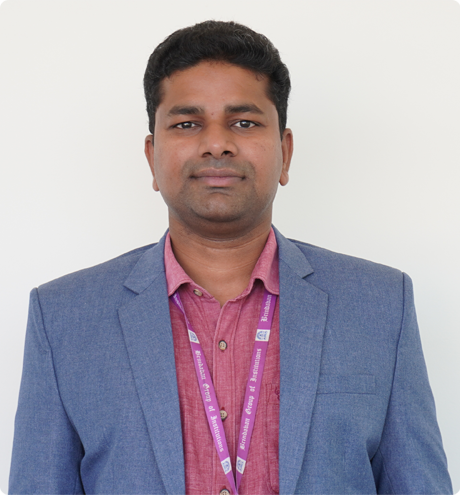
Dr.K. Chenna Reddy
Associate Professor & HoD
Qualification : M.E, Ph.D.
Experience : 12 years
Specialization : Internet of Things and Wireless Sensor Networks
Email Id : hodece@brindavancollege.com
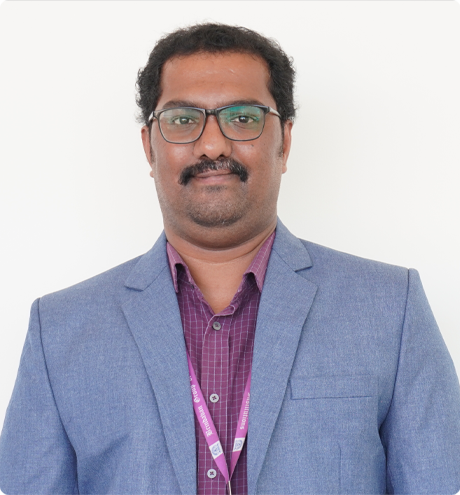
Prof. Boban Mathews
Assistant Professor
Qualification : B.E., M.Tech, (Ph.D)
Experience : 9 years
Specialization : Electronics
Email Id : bobanmathews05@brindavancollege.com
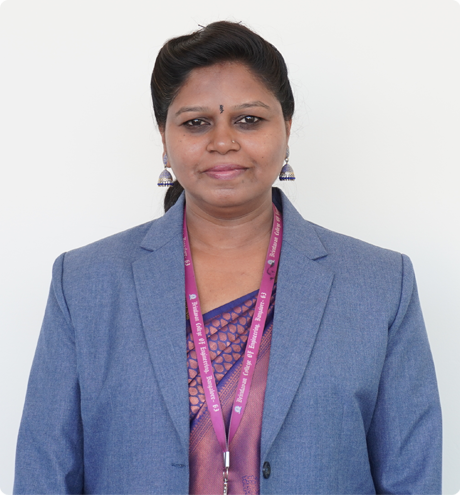
Prof. Mamatha N P
Assistant Professor
Qualification : B.E., M.Tech, (PhD)
Experience : 13 years
Specialization : VLSI and Embedded System Design
Email Id : npmamatha@brindavancollege.com
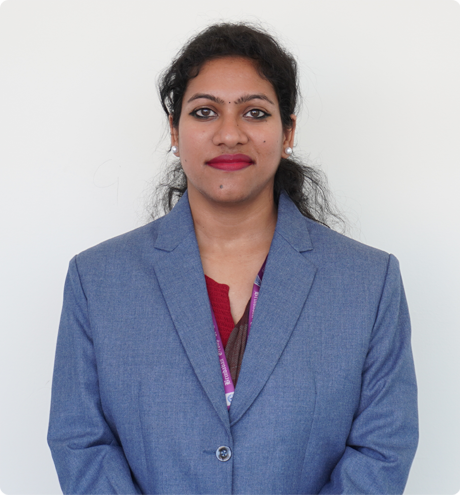
Dr. Sudeshna Surabhi
Associate Professor
Qualification : B.E., M.Tech, PhD
Experience : 7 years
Specialization : Semiconductor, Thin Film in NanoTechnology
Email Id : sudeshnasurabh@brindavancollege.com
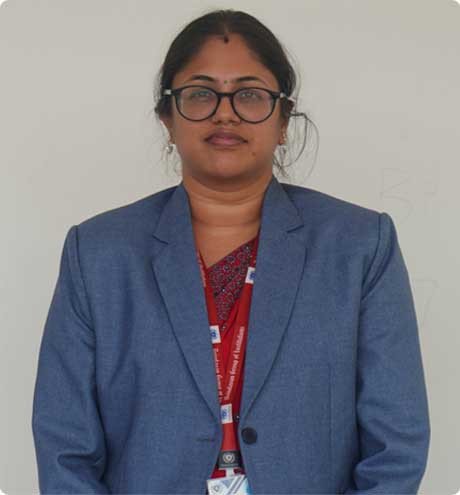
Prof. Sowmya Rayapati
Assistant Professor
Qualification : B.Tech , M.Tech
Experience : 5 years
Specialization : Digital systems and Computer Electronics
Email Id : sowmyar@brindavancollege.com
Area Of Interest : Digital Electronics, Computer organisation
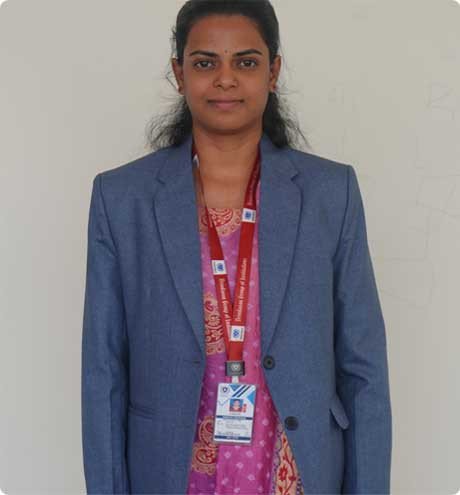
Prof. Shilpa G
Assistant Professor
Qualification : B.E , M.Tech
Experience : 3 years
Specialization : Communication Systems
Email Id : shilpag@brindavancollege.com
Area Of Interest : Analog communication, Antennas, signal processing, Control systems

Prof. Aparna Kulkarni
Assistant Professor
Qualification : B.E , M.E
Experience : 8 years
Specialization : Signal Processing
Email Id : aparnak@brindavancollege.com
Area Of Interest : Digital Signal Processing, Digital Image Processing, Embedded System
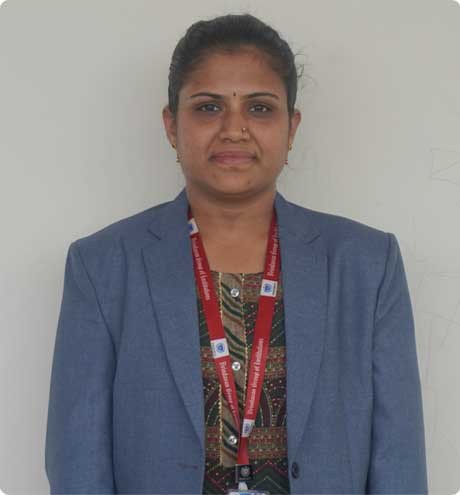
Prof. Jahnavi D.M
Assistant Professor
Qualification : B.E., M.Tech
Experience : 2 years
Specialization : VLSI DESIGN & Embedded systems
Email Id : jahnavidm@brindavancollege.com
Area Of Interest : AI in VLSI ,Graphene in VLSI,Analog and digital VLSI
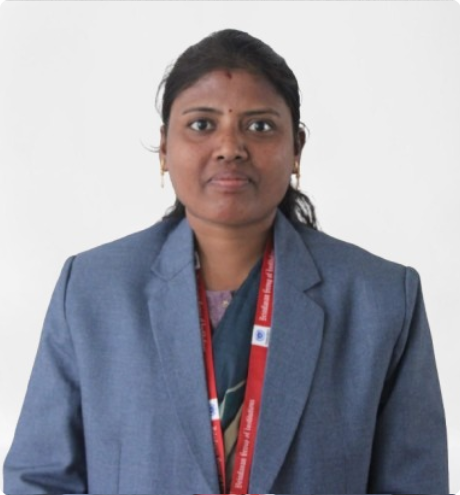
Dr. Shweta N
Assistant professor
Qualification : M.Tech, PhD
Experience : 2 years
Specialization : Wireless sensor network, communication, Biomedical signal and image processing
Email Id : shweta.ece@brindavancollege.com
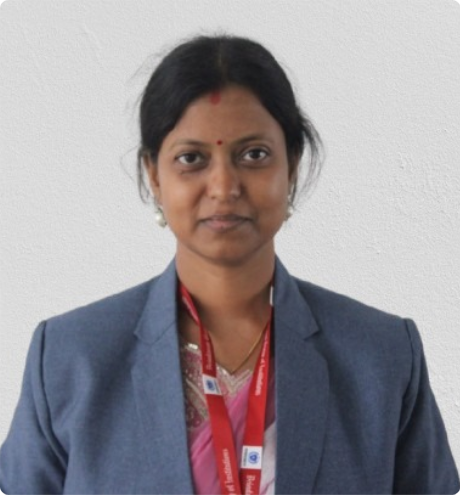
Prof. Pragyan Paramita Mohanty
Assistant professor
Qualification : M.Tech
Experience : 2 years
Specialization : VLSI design & Embedded system
Email Id : Pragyan.ece@brindavancollege.com
